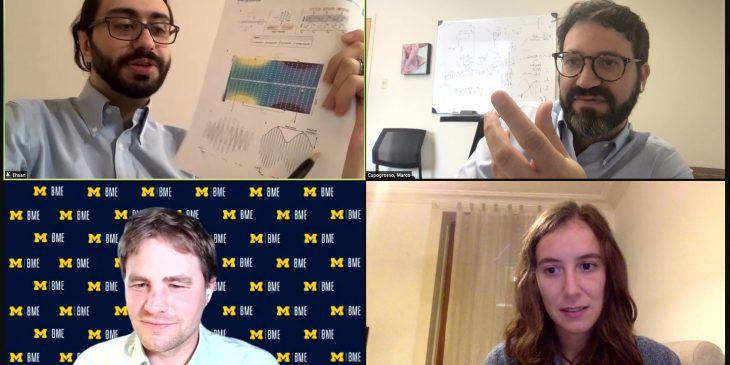Despite what enthusiasts might say, we can’t rush into using new brain stimulation technologies to cure diseases and treat pain until we fully understand how these therapies actually work, argue researchers from the University of Pittsburgh and the University of Michigan.
In a paper published recently in the journal Cell Systems, Marco Capogrosso, Ph.D., assistant professor at the Department of Neurological Surgery at Pitt School of Medicine, and coauthors say that to reduce risks and increase efficacies of neurostimulation, the scientific community must adopt rigorous mathematical models that can help predict potential side effects in patients.
“I think that our study shows how important it is to stick to basic science when performing applied research,” said Capogrosso. “We are convinced that having rigorous experimental controls and a physical understanding of how neurotechnologies work will not slow, but rather accelerate, the development of these therapies to treat horrible neurological disorders.”
Non-invasive neurostimulation, or using electric or magnetic stimulation to modulate the brain’s activity without performing any surgeries, is getting more attention from scientists, biotech companies and the curious public alike.
However, these technologies currently are being developed from experimental observations without a clear understanding of how they work.
And while some may argue that it’s not necessary to understand the science behind a technology if it benefits many patients, such ignorance can prevent us from understanding the nature of potential side effects, the scientists say. “We already know that traditional brain stimulation can induce undesired emotional responses, pain or even unwanted muscle activation,” Capogrosso said. “Only rigorous science can help us minimize the risk of future therapies.”
In their study, he and his collaborator, Scott Lempka, Ph.D., of the Department of Biomedical Engineering at the University of Michigan, and their trainees, Ehsan Mizakhalili and Beatrice Barra, focused on a promising new technology called Temporal Interference, which proposes to apply interfering electrical fields outside the skull to non-invasively target deep brain structures.
According to their calculations, while this technology could potentially eliminate the need for surgery to implant electrode systems for deep brain stimulation when treating conditions such as Parkinson’s disease, current studies are missing critical experimental controls that directly look for side effects.
“From our computer models, we found that it is possible to stimulate deep brain structures with temporal interference stimulation,” said Lempka. “However, this stimulation comes at the cost of potentially dangerous side effects, such as blocking nerve conduction in certain brain areas or creating unwanted excitation in off-target structures. If temporal interference is to evolve into a mature and clinically effective technology, these theoretical concepts must be considered before translating into clinical applications.”
Photo Description: Ehsan Mizakhalili (top left), Marco Capogrosso (top right), Scott Lempka (bottom left), and Beatrice Barra (bottom right) worked on the paper across six time-zones over the summer.









